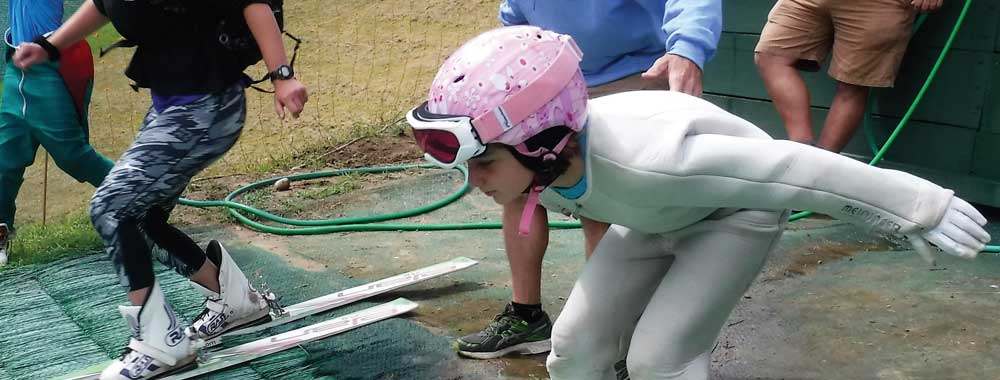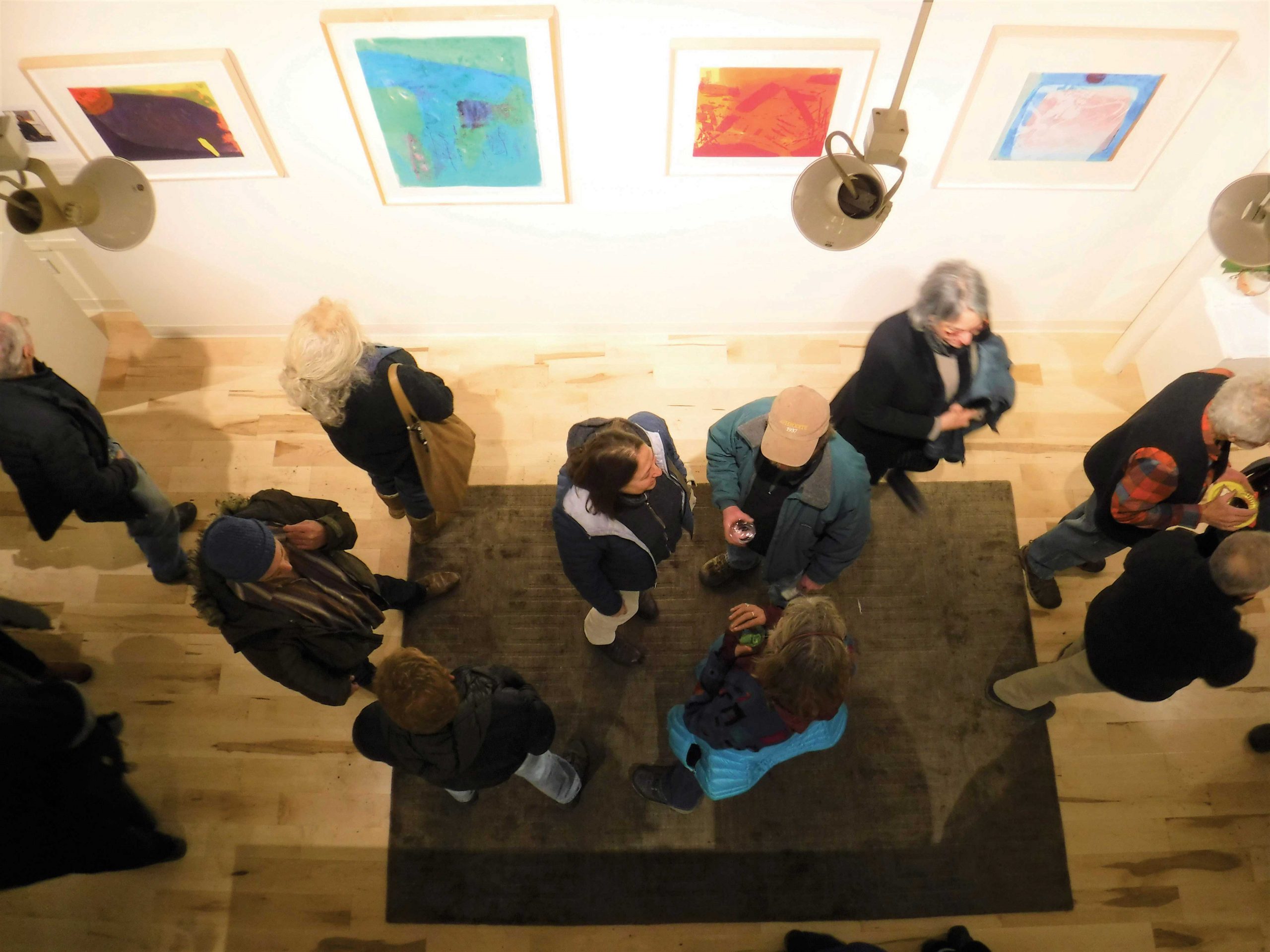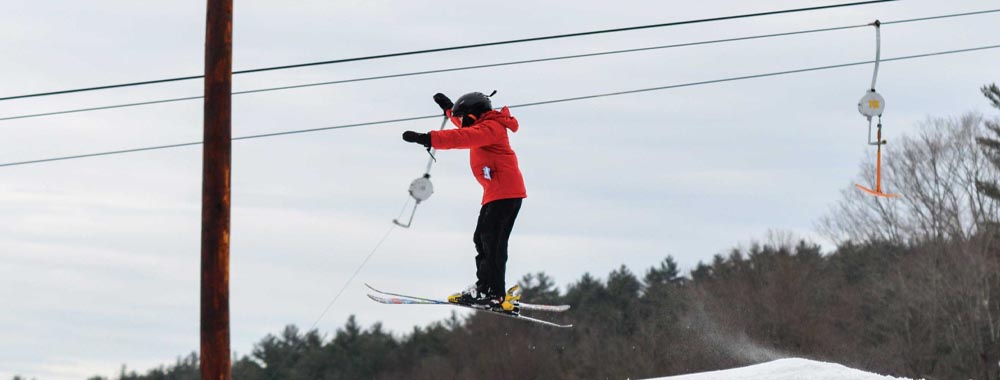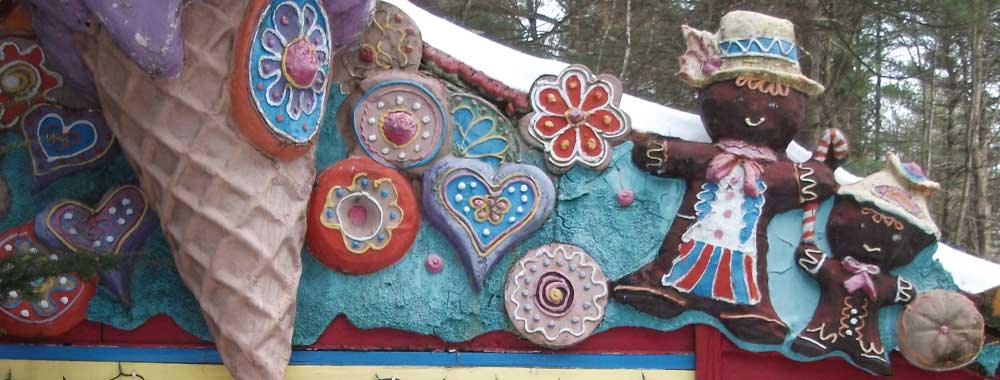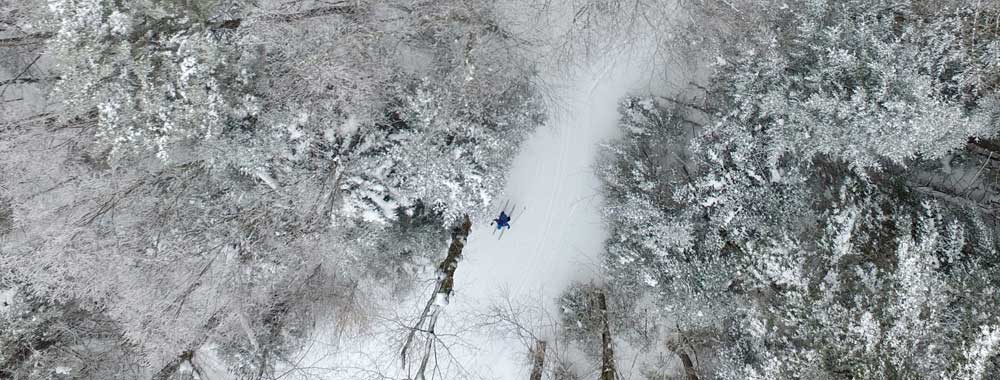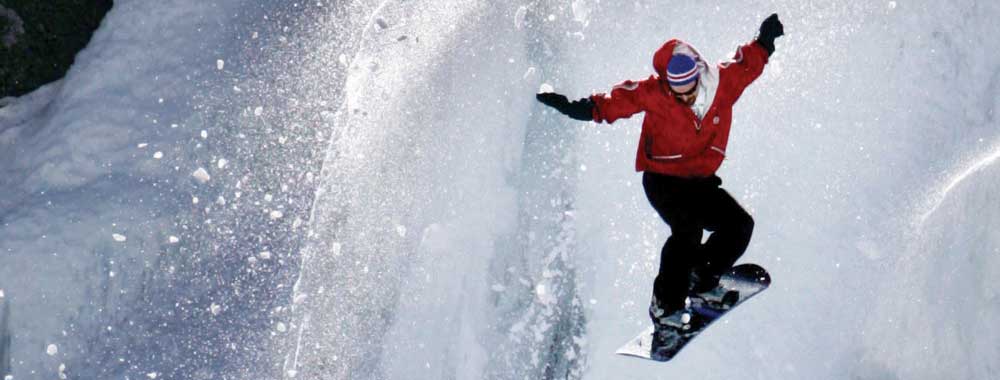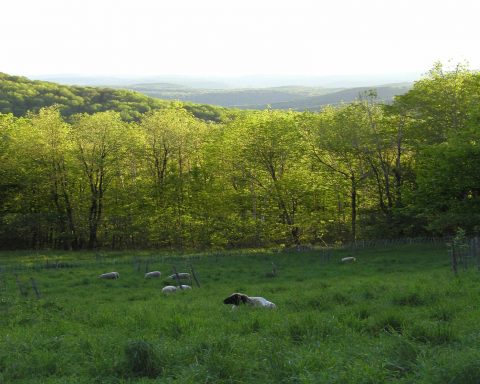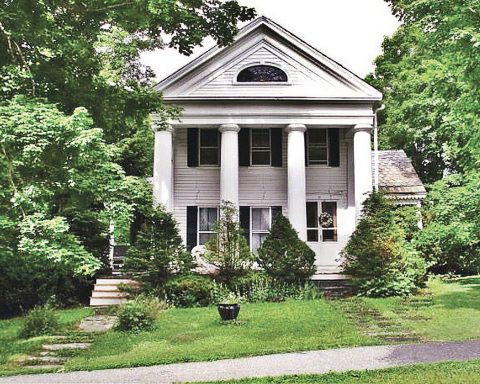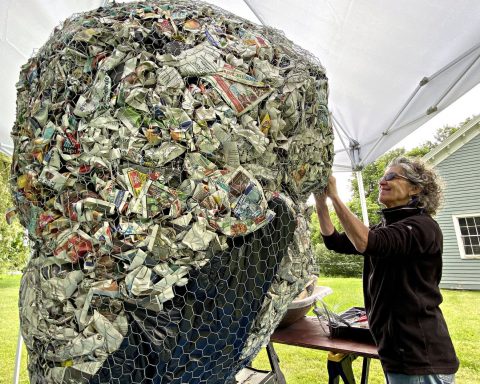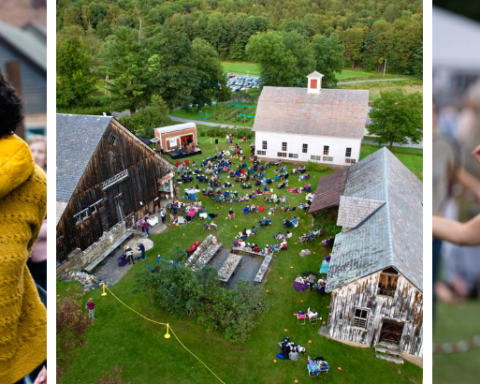Training the next generation of Harris Hill jumpers

By Kevin O’Connor
Vermont fourth-grader Ava Einig is 4½ feet tall. The Olympic-caliber Harris Hill ski jump in her birthplace of Brattleboro is 65 times as high, unparalleled in New England and one of only six of its size in the nation. So, how does someone of Ava’s ground-level stature learn such a skyscraping sport?
The 9-year-old suggests a leap of faith.
“I practiced jumping off my mom’s cedar chest onto a gymnastics mat,” she says.
Her father, Todd Eining, a former Junior Olympian turned Harris Hill chief of competition, had another idea.
Vermonters have ski-jumped for nearly a century, ever since Brattleboro outdoorsman Fred Harris — he was a contemporary of the airplane-inventing Wright brothers — first strapped wooden slats to his feet and catapulted off a snow-covered ramp.
“Broke my skis all to pieces,” Harris penned in his diary at the turn of the 20th century.
Harris, a pioneering “extreme skier,” is credited with making the earliest slalom descents of Mount Washington in New Hampshire and Whiteface in New York. Harris founded the Dartmouth Outing Club — it was the first organization of its kind in the country — in 1909, then created the Brattleboro Outing Club in 1922, the same year he built the namesake ski jump in his hometown.
Harris Hill, in turn, now annually attracts several thousand spectators and has hosted nine national championships, starting in 1924 with the first finals held in the East and continuing up to the U.S. qualifiers for the 1992 Winter Olympics in Albertville, France.
But with succeeding generations wandering elsewhere with the arrival of the interstate and the internet, participation has dipped to the point that only one Brattleboro jumper — Spencer Knickerbocker, a 26-year-old Marlboro College senior — now joins his national peers at Harris Hill’s annual competition, set this year for the weekend of Feb. 16 and 17.
To change that, Todd Einig, who competed three decades ago, has launched a junior training program to cultivate a new crop of homegrown athletes.

Want to skyrocket off the 90-meter height of Harris Hill? You have to start small. Einig teaches interested boys and girls at such gentle nearby slopes as Vermont Academy in Saxtons River and, starting this winter, a newly renovated location at Living Memorial Park in Brattleboro.
This past summer, Einig also circumvented the seasons by introducing his daughter to the porcelain-track starting gates and plastic-covered landing hill at Lake Placid, N.Y., home of the 1932 and 1980 Winter Games.
“If kids can try small jumps, hopefully, you’ll have some who decide this is a thing they can do,” says USA Nordic Team Director Clint Jones, who wore a T-shirt and shorts this past August as he sprayed a practice slope with a garden hose for added slipperiness.
Nearby, West Fairlee seventh-grader Eli Mansur donned skis, boots, a bodysuit and helmet. A year ago, Eli hadn’t heard of the sport. Then, Upper Valley Olympic jumpers Jeff Hastings and Walter Malmquist visited Eli’s school, spurring the teenager to train both winter and summer.
“I really like the thrill of flying in the air,” Eli said. “My goal is to do the best I can — and keep getting better.”
Students tend to start on a 20-meter training hill before moving up to higher and higher launches.
“It’s such a gradual progression,” says Gabby Armstrong, a Lake Placid competitor and coach. “We’re trying to make you comfortable and confident on each hill.”
Students, for their part, begin as early as kindergarten.
“If you try to start when you’re older,” Jones said, “you’re going to be thinking too much.”
Eli’s sister, Isla, relates. The fourth-grader lives just down the road from Tara Geraghty-Moats, a 25-year-old West Fairlee athlete who began competing at the World Cup level five years ago. But such inspiration can be overshadowed by the intimidation of a launch ramp bigger than the one Eli’s brother fashioned in their backyard.
“I think I’m just going to go down the landing hill,” Isla said.
Einig understands the apprehension.
“You’re up there and have a view of everything,” he said. “That brings a little bit of scariness.”
Training, as a result, is as much mental as physical. Watch a youngster eye the smallest hill with trepidation and you realize the fears and figments in anyone’s mind are often the biggest obstacles. To advance, coaches advise trying and, if you fall, standing up and trying again.
“You have to get to the stage where you totally commit,” Jones said. “When you get the courage, it can be a huge personal step and confidence builder.”
Norwich 12-year-old Caleb Zuckerman is proof personified.
“My first year, I just did the landing hill,” said the seventh-grader, who is now flying off Harris Hill at speeds approaching 60 mph before soaring more than 300 feet in the air.
Such spirit echoes that of Harris, who forged forward after his first “broke my skis all to pieces” fall.

“Tried jump several times,” the pioneer went on to write in his diary, “and at last made it.”
If only he could foresee what it all would snowball into.
“Hopefully, in a few years,” Todd Einig says, “we can get more hometown kids jumping.”
Kevin O’Connor is a Vermont native and Brattleboro Reformer contributor.
